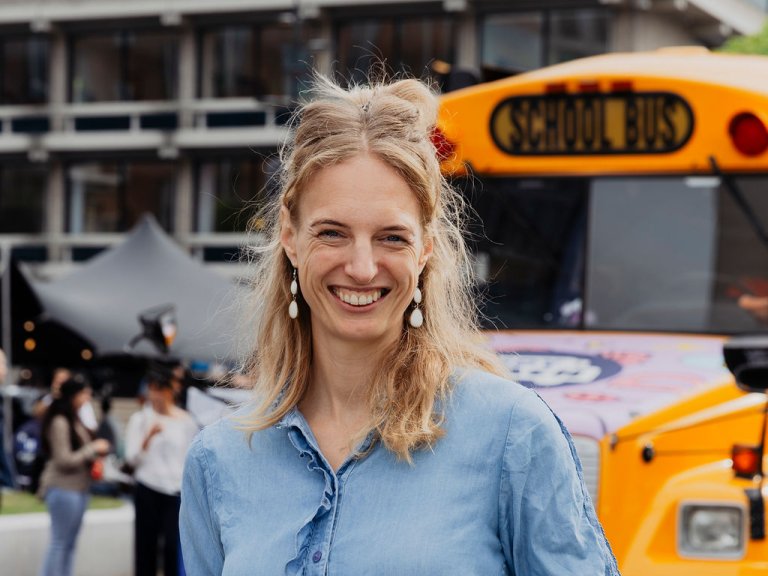In the Netherlands, childhood overweight and obesity remain a pressing public health challenge. Many children with excess weight face not only physical health risks, but also emotional and social difficulties. Although healthcare providers, schools and municipalities are eager to help, they face barriers such as stigma, limited expertise, lack of inadequate infrastructure and financial constraints. This results in an approach that is fragmented and lacks a single, coordinated system of care. The Care for Obesity project was initiated to offer evidence- and practice-based knowledge to close this gap. Led by APH researcher Bibian van der Voorn, the project focuses on developing tools and materials that facilitate the implementation of an effective, accessible and sustainable, integrated approach to childhood overweight. By connecting organisations of healthcare, education and social services, the project aims to create a coherent network around children and families, ensuring they receive the right help at the right time.
From knowledge sharing to national policy impact
Care for Obesity began over almost two decades ago as a knowledge initiative to bridge research, policy and practice in the field of childhood obesity. All the research is co-created with local professionals and policymakers to generate ‘knowledge that works’.
The project’s impact is significant due to its broad network and diverse expertise. In 2022, in collaboration with ten professional and advocacy organisations, the team revised the overarching guideline, which now serves as the primary framework for updating monodisciplinary guidelines. The integrated care approach for children with overweight and obesity, outlined in the national model developed by the team together with 8 frontrunner municipalities, has been included in the Dutch Integral Care Agreement and will be mandatory in all municipalities by 2027. Key elements of this approach are now reimbursed by health insurance. “From the beginning, creating impact that suits the needs of daily practice, has been an integral goal. We involve stakeholders at every stage from shaping questions to sharing results. As a physician and researcher, I see it as my mission to bridge gaps and work with others to ensure equal opportunities for every child living with obesity,” Bibian explains.

Science meets implementation
The strength of Care for Obesity lies in combining science with practical tools. Together with partners such as JOGG, RIVM and NCJ (Nederlands Centrum voor Jeugdgezondheid), the team developed implementation guides, e-learnings and factsheets now used nationwide by healthcare professionals and social workers. Over 15 years, the project built its reputation through continuous stakeholder involvement and clear investments in communication and design to make scientific results useful for daily practice. One example is the guide and conversation map developed with healthcare professionals to support psychosocial and lifestyle assessments. The guide combines international evidence with expert opinions and includes recommendations for integrating these assessments into standard care. It is widely used. This year, 4 years after its release, professionals expressed doubts about its suitability for the group aged 14 and older. In response, the team conducted a qualitative study with both professionals and adolescents to assess how such tools meet the needs of this specific agegroup and whether different versions are necessary to develop.
Co-creation is key to this project. By actively involving stakeholders at every stage, the project fosters ownership and makes optimal use of knowledge, networks and perspectives. Partnerships thrive when there is a clear win-win, such as funding opportunities, access to expertise or future roles. To strengthen this, the team sometimes appoints a stakeholder liaison during projects, providing strategic advice and coordination, a crucial investment especially in times of budget cuts.
Lessons learned: invest in trust, time and teamwork
The biggest challenges were organizational and political: conflicting interests and the lack of structural funding hindered long-term impact. Although project funding was only partly affected, these barriers limited partner engagement and the implementation of the approach. Overcoming these obstacles required time and trust. Starting small with quick-win projects to show the value of collaboration. Bibian, initially inexperienced in policy and lobbying, grew through coaching and practice: “I realized I knew more than I thought and the best way to learn was simply by doing.” Making impact requires more than the traditional research skills.
Do’s:
- Dare to think outside the box and innovatively
- Gather experts around you with different perspectives
- Invest in visibility: make your work understandable and relevant to different audiences
- Share your information and content early and often and involve others at an early stage
Don’ts:
- Don't assume that previous successes are a blueprint. Every context requires a customized approach.
- Don't wait too long to involve stakeholders, involvement from the outset is essential.
- Don't see impact as something you only organize at the end, it must be woven into every phase of your project.

